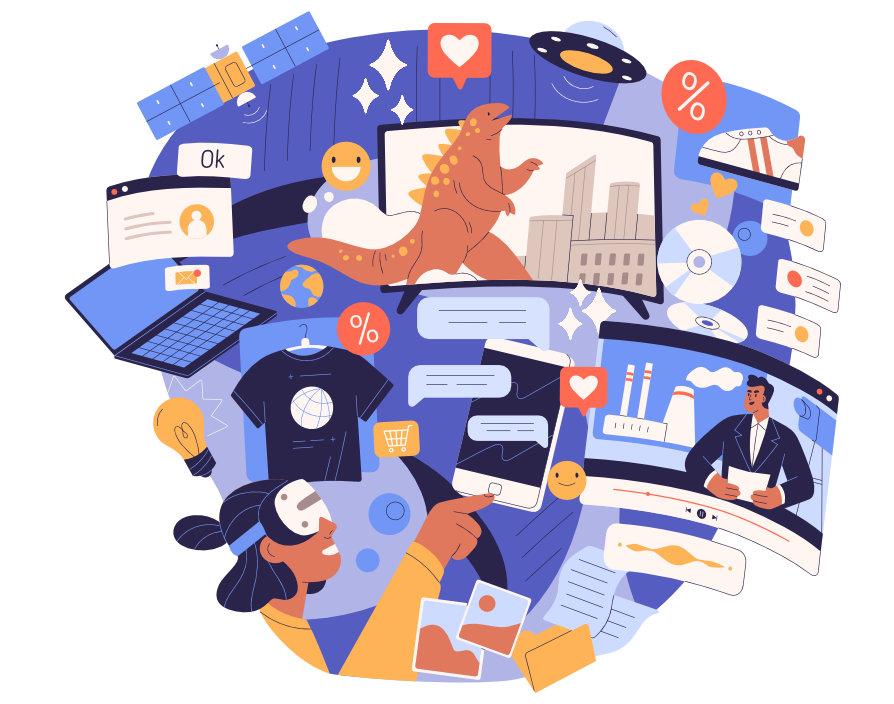Over the years, technology has proven to be a major source of disruption in many industries. That is why going through a path of digital transformation is so critically important for your business in your quest to achieve greatness. Making sense of chaos enables you to exploit it to your advantage by understanding patterns of behaviour in the outside world that others cannot yet comprehend, but how do you really exploit chaos?
Spot industry vulnerabilities
Making sense of chaos is not enough. You need to understand where to strike to make the most impact. The most vulnerable are those organisations that are oblivious to change or are under the illusion that they are too big to fail. I have seen giants in several industries fall into this trap.
Let’s take the music industry as an example. During the 2000s, the industry was hit by a major storm of piracy brought about by the rise of the internet and file sharing platforms such as Napster and LimeWire. Until that time, music had been largely distributed in physical formats such as CDs, but the internet enabled users to share music files electronically free of charge, essentially bringing major music houses to their knees. In fact, the Recording Industry Association of America (RIAA) reports that revenue from the music industry in the United States dropped from around US$14.6bn in 1999 to a low of US$6.7bn in 2015. A major vulnerability in the music industry was created, but this was also an opportunity that could be exploited.
You may identify opportunities by analysing your competition critically and noticing the areas where the largest market dissonance has been created. Then you focus on these areas to create your greatest opportunities. Spotify did precisely that. It made sense of chaos arising from technology and turned it on its head, solving the major piracy problems that emerged during the early days of the twenty-first century.
Spotify sought to bridge the gap between the requirements of the user to access music cheaply and conveniently and those of the music industry to make sustainable profit. Moreover, Spotify provided a platform for individual musicians to access a large audience without having to go through music pro- duction houses. The flourishing success of Spotify is evident as its market share in the music industry in the United States has increased tremendously from 7% in 2010 to around 83% in 2020 (RIAA).
Develop new algorithms that make sense of chaos
Making sense of chaos means understanding the new rules of the game and the gaps generated in the industry. Once you properly understand the rules, you can model them into algorithms to predict alternative outcomes based on anticipated variable changes. At this stage, you will need to create a representative algorithm that can quantifiably put some order to chaos. Design the algorithm using advanced machine learning tools to enable it to become more accurate as more data is analysed.
Formulate strategies to withstand alternative futures
The new algorithm you design should shape your mindset and strategic thinking, but your sense of the future may prove to be unreliable. This is not about an incorrect interpretation of patterns in variables; it is more about fluid and unpredictable changes in the patterns of the variables themselves, potentially caused by the ripple effects of the underlying chaos. This becomes evident in cases of sets of competing standards and rules where one set eventually dominates over another.
Design and build alternative scenarios based on the critical variables, then formulate robust strategies that can succeed in multiple scenarios. Finally, build in flexibility to change as the industry dynamics change. Building alternative scenarios is important because in a chaotic and uncertain world, you never know how the future is going to play out. Alternative scenarios give you a sense of how your business could be impacted by changes in variables in your external environment, which you do not control.
I have bad news for those who crave routine. Everything around us is temporary and nothing ever stays the same. Technology has made the pace of change faster and more unpredictable than ever before, but change does not control our destiny.
Losers resist change to preserve the status quo. Winners use their heuristic capability to understand the change and exploit it to their own advantage.
This is an extract from Digital Made Simple by David Galea.
Share via:








































